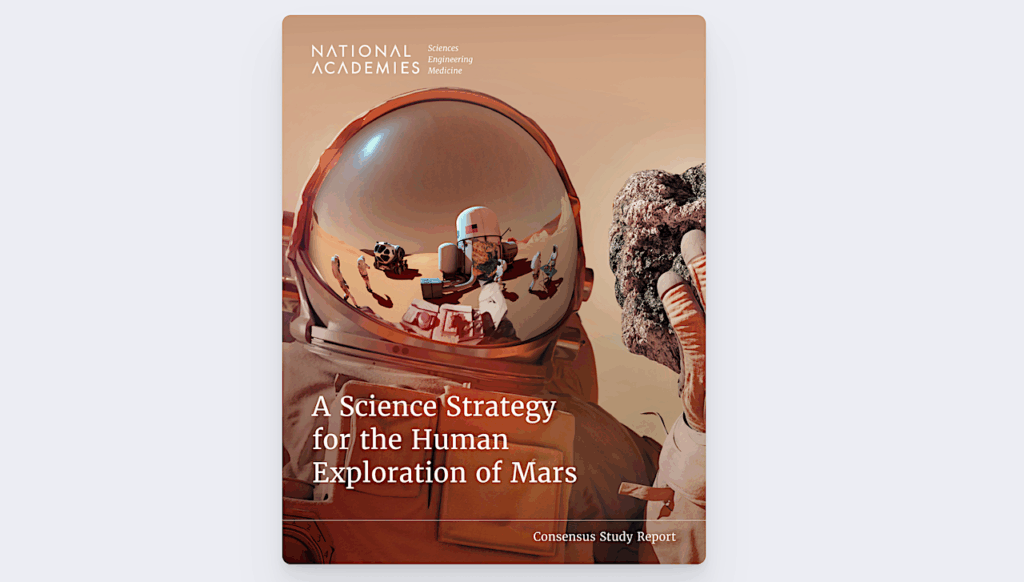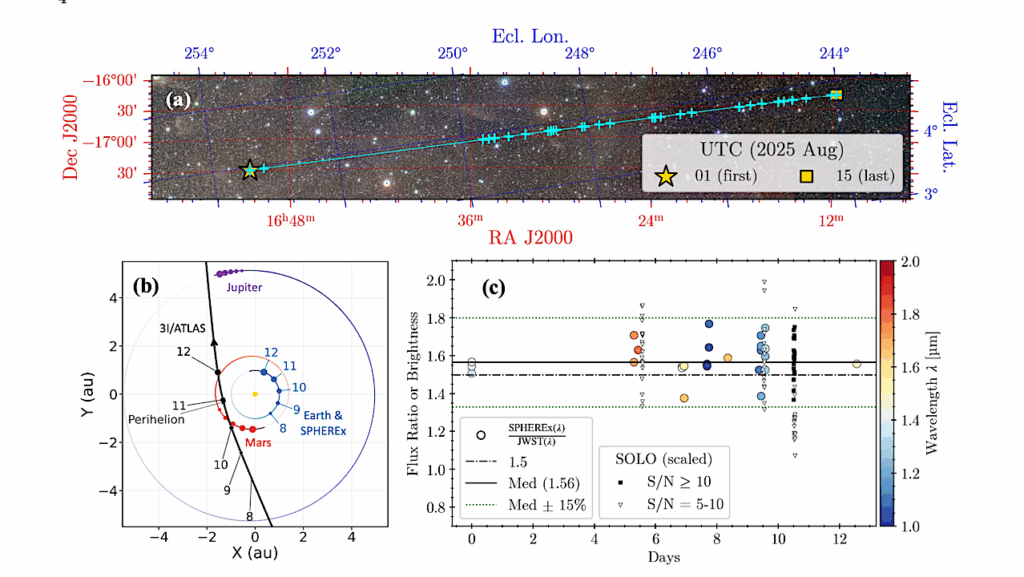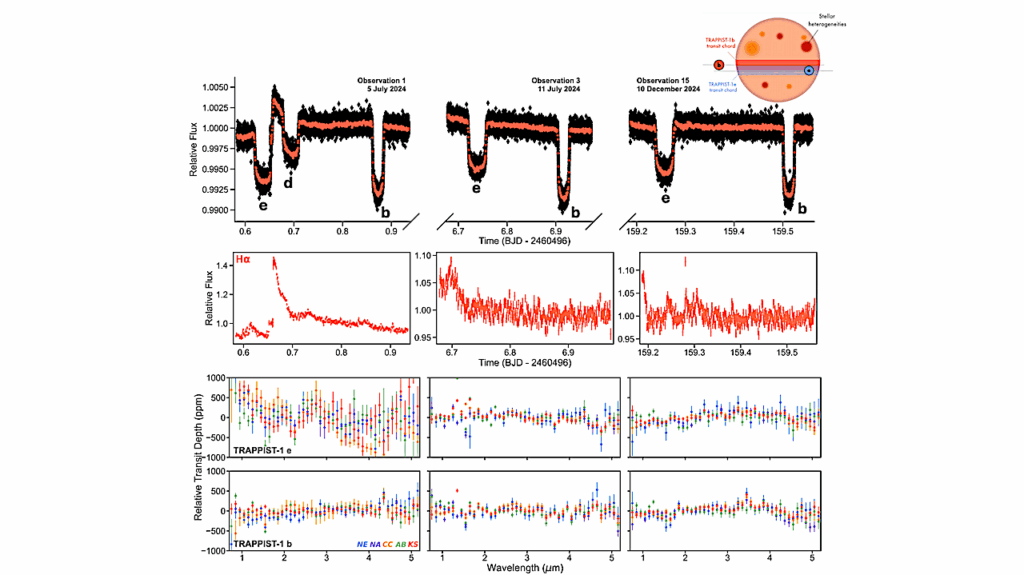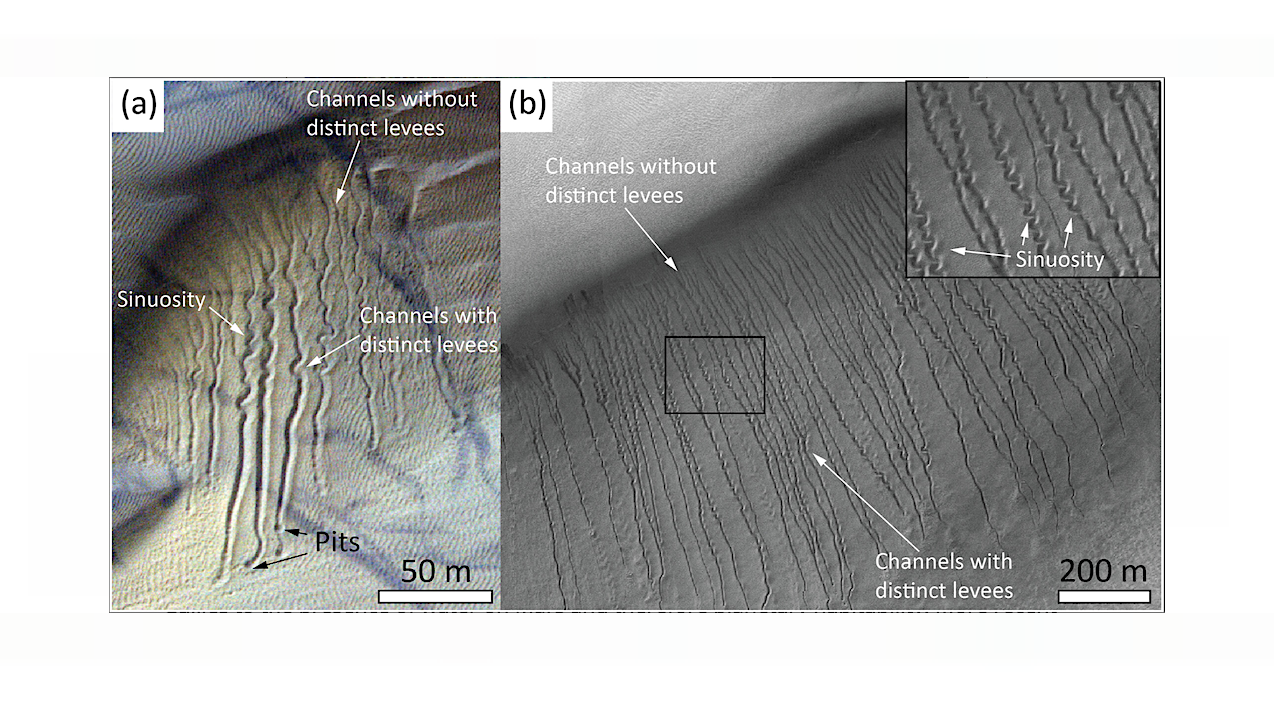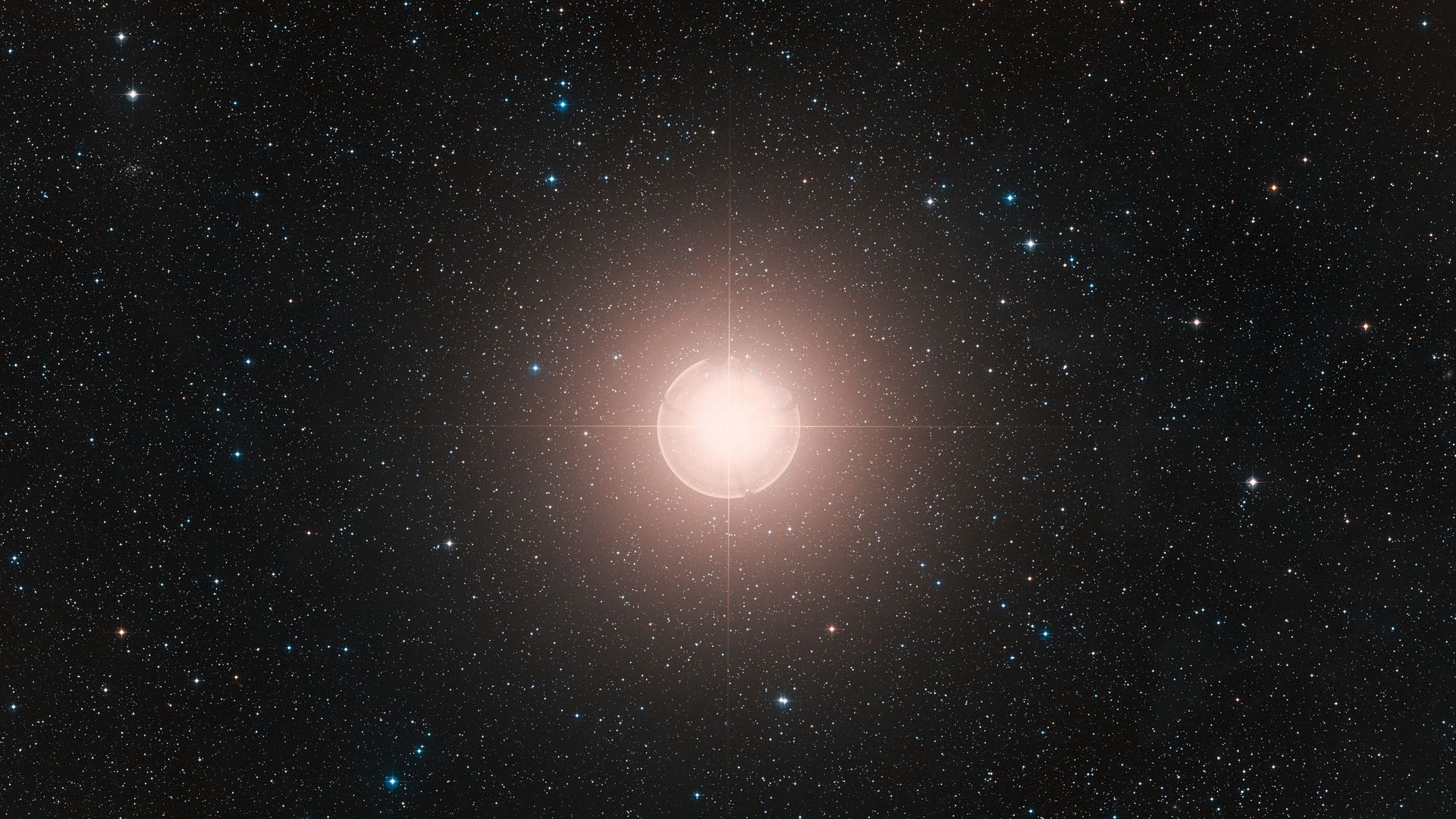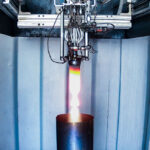Now Reading: SOAPv4: A New Step Toward Modeling Stellar Signatures In Exoplanet Research
-
01
SOAPv4: A New Step Toward Modeling Stellar Signatures In Exoplanet Research
SOAPv4: A New Step Toward Modeling Stellar Signatures In Exoplanet Research
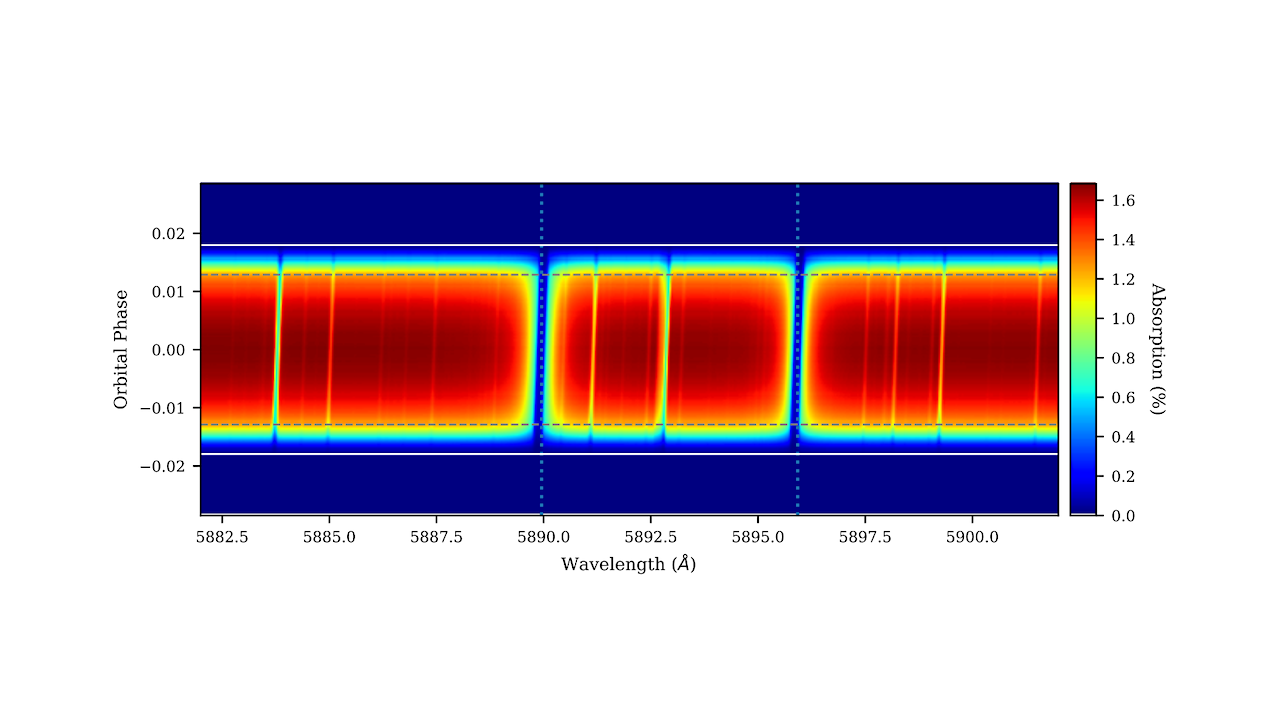

The time evolution of the stellar spectra occulted by the planet as a function of orbital phase, in the wavelength range 5882–5902 Å, which includes the sodium doublet. The positions of the Na ilines are highlighted by vertical dotted lines. The horizontal white lines indicate the transit contacts, with solid white representing T1 and T4, and dashed gray representing T2 and T3 (from negative to positive values of phase). This map was constructed by subtracting the in-transit flux-weighted spectra from a reference out-of-transit spectrum. — astro-ph.EP
We present and describe a new version of the spot oscillation and planet code, SOAPv4. Our aim is to demonstrate its capabilities in modeling stellar activity in the context of RV measurements and its effects on transmission spectra.
To do this, we employed solar observations alongside synthetic spectra and compared the resulting simulations. We used SOAPv4 to simulate photospheric active regions and planetary transits for a Sun-like star hosting a hot Jupiter. By varying the input spectra, we investigated their impact on the resulting absorption spectra and compared the corresponding simulations.
We then assessed how stellar activity deforms these absorption profiles. Finally, we explored the chromatic signatures of stellar activity across different wavelength ranges and discussed how such effects have been employed in the literature to confirm planet detections in radial-velocity measurements.
We present the latest updates to SOAP, a tool developed to simulate active regions on the stellar disk while accounting for wavelength-dependent contrast. This functionality enables a detailed study of chromatic effects on radial-velocity measurements. In addition, SOAPv4 models planet-occulted line distortions and quantifies the influence of active regions on absorption spectra.
Our simulations indicate that granulation can introduce line distortions that mimic planetary absorption features, potentially leading to misinterpretations of atmospheric dynamics. Furthermore, comparisons with ESPRESSO observations suggest that models incorporating non-local thermodynamic equilibrium effects provide an improved match to the absorption spectra of HD 209458 b, although they do not fully reproduce all observed distortions.
E. Cristo, J. P. Faria, N. C. Santos, W. Dethier, B. Akinsanmi, A. Barka, O. Demangeon, J. P. Lucero, A. M. Silva
Subjects: Earth and Planetary Astrophysics (astro-ph.EP); Solar and Stellar Astrophysics (astro-ph.SR)
Cite as: arXiv:2510.08319 [astro-ph.EP] (or arXiv:2510.08319v1 [astro-ph.EP] for this version)
https://doi.org/10.48550/arXiv.2510.08319
Focus to learn more
Related DOI:
https://doi.org/10.1051/0004-6361/202555184
Focus to learn more
Submission history
From: Eduardo Cristo
[v1] Thu, 9 Oct 2025 15:05:09 UTC (921 KB)
https://arxiv.org/abs/2510.08319
Astrobiology, exoplanet, stellar cartography,
Stay Informed With the Latest & Most Important News
Previous Post
Next Post
-
 012024 in Review: Highlights from NASA in Silicon Valley
012024 in Review: Highlights from NASA in Silicon Valley -
 02Panasonic Leica Summilux DG 15mm f/1.7 ASPH review
02Panasonic Leica Summilux DG 15mm f/1.7 ASPH review -
 03How New NASA, India Earth Satellite NISAR Will See Earth
03How New NASA, India Earth Satellite NISAR Will See Earth -
 04And Thus Begins A New Year For Life On Earth
04And Thus Begins A New Year For Life On Earth -
 05From Polymerization-Enabled Folding and Assembly to Chemical Evolution: Key Processes for Emergence of Functional Polymers in the Origin of Life
05From Polymerization-Enabled Folding and Assembly to Chemical Evolution: Key Processes for Emergence of Functional Polymers in the Origin of Life -
 06Astronomy Activation Ambassadors: A New Era
06Astronomy Activation Ambassadors: A New Era -
07SpaceX launch surge helps set new global launch record in 2024












